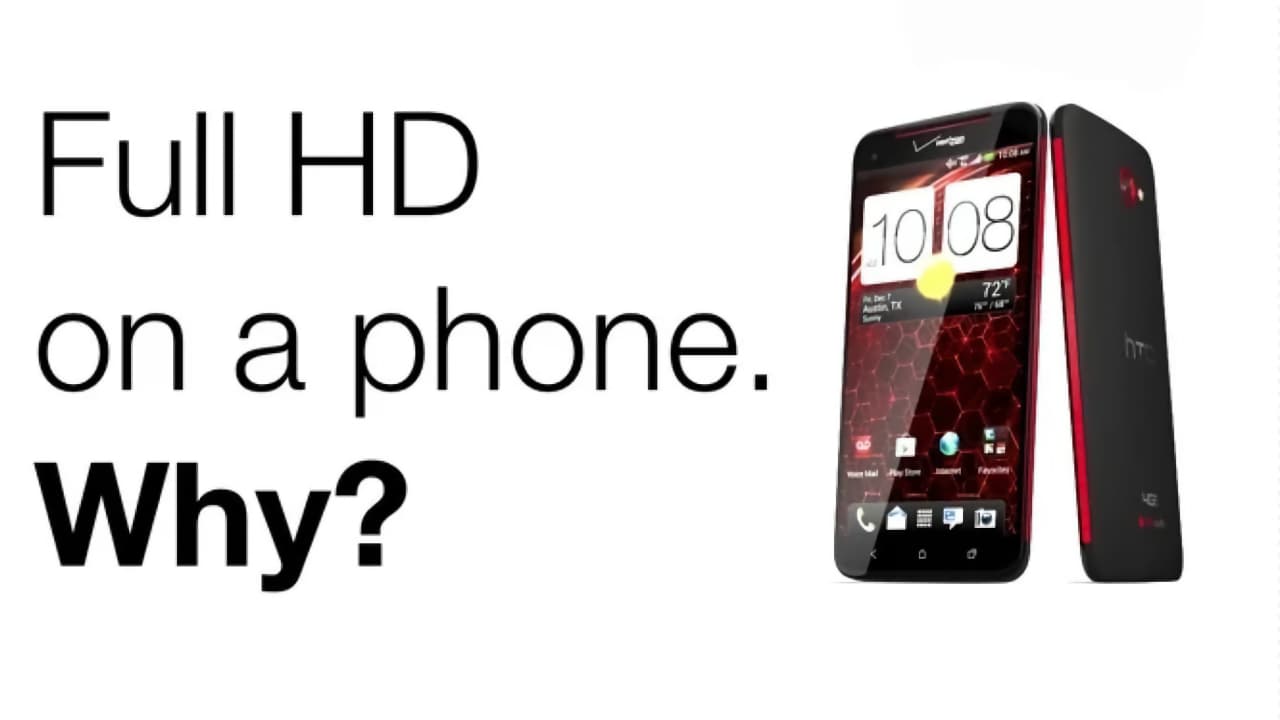
One of the benefits of being around for a while now is that we get to look back on the past with a mix of nostalgia and slight dizziness and this article, saying "1920x1080 on a smartphone is a magnificent technical achievement," is a cracker of the genre.
Meanwhile, one of the disadvantages of being around for a while now is that you have to throw your old stuff away. Our CMS only allows us to host 10,000 stories so, as we put new content on in 2025, so some of our older material has to be consigned to the digital graveyard of the Wayback Machine or elsewhere.
We're doing this manually so we don't get rid of anything important or historical, which means every so often we stumble across things we've forgotten about that really take us back.
This article is one of them and the shock announcement of Full HD on a smartphone along with an accompanying graphic questioning the value of this. It concludes that it's a worthwhile endeavour (correct) but that it's just probably a stepping stone to Google Glasses - type headsets, or even Retinal Projection (still pending).
And, inevitably, I'm writing this on an iPhone that has bumped that Full HD res up to 2556 x 1179 without making too much of a fuss about it. Sony, meanwhile, makes a 4K phone...
Begin flashback...
[Original article by David Shapton]
HTC's new DROID DNA is the first smartphone to sport Full HD resolution, which until now was a specification more commonly associated with large-scale LCD screens that you hang on your wall and view from a distance of around ten feet.
All very impressive.
Full HD on a 5" screen?
But you have to ask why you would need Full HD resolution on a screen that - although massive for a phone at 5" - has only a tiny fraction of the area of a typical domestic television.
Here's what is good about it:
- Text will be very sharp.
- Video will look very good. It won't have to be resized, which might save processing power
- If your eyesight is good, this might take the place of a much larger tablet.
- As long as the colour rendition is accurate, this will be a good way to show off your videos to your friends and clients
Here's what might be bad about it:
- Text might be very small
- Keeping all those pixels alive will hammer the battery
- It may also hog processing capacity - although see point 2 above
Video compression
Realistically, once video has been compressed for delivery over the internet - and especially a mobile networks (notwithstanding 4G) it is never going to be 1920 x1080 in actual resolution. What's more, you're simply not going to see that resolution in video content even if it is there, unless you hold it uncomfortably close to your eyes.
So, is this just a cynical marketing ploy to take first place in the specification race, or does this phone bring some genuine innovation?
I think it does. As long as the performance issues aren't too great, I can't see any downside to having very high resolution screens on phones. Whether or not you can actually see the difference, any move towards being able to show video content in its original resolution has to be a good one.
Smartphones with no displays
And, looking ahead to where smartphones don't have displays at all but, instead, we use Google Glasses - type headsets, or even Retinal Projection (Where images are somehow projected in high resolution direct onto our retinas), having the means to deliver this content wirelessly via a smart device means that we are a step closer to seeing incredibly detailed images as we are mobile, with all the implications that has for augmented and virtual reality apps that will start to become an essential part of our daily lives.
End flashback...
Tags: Business


Comments